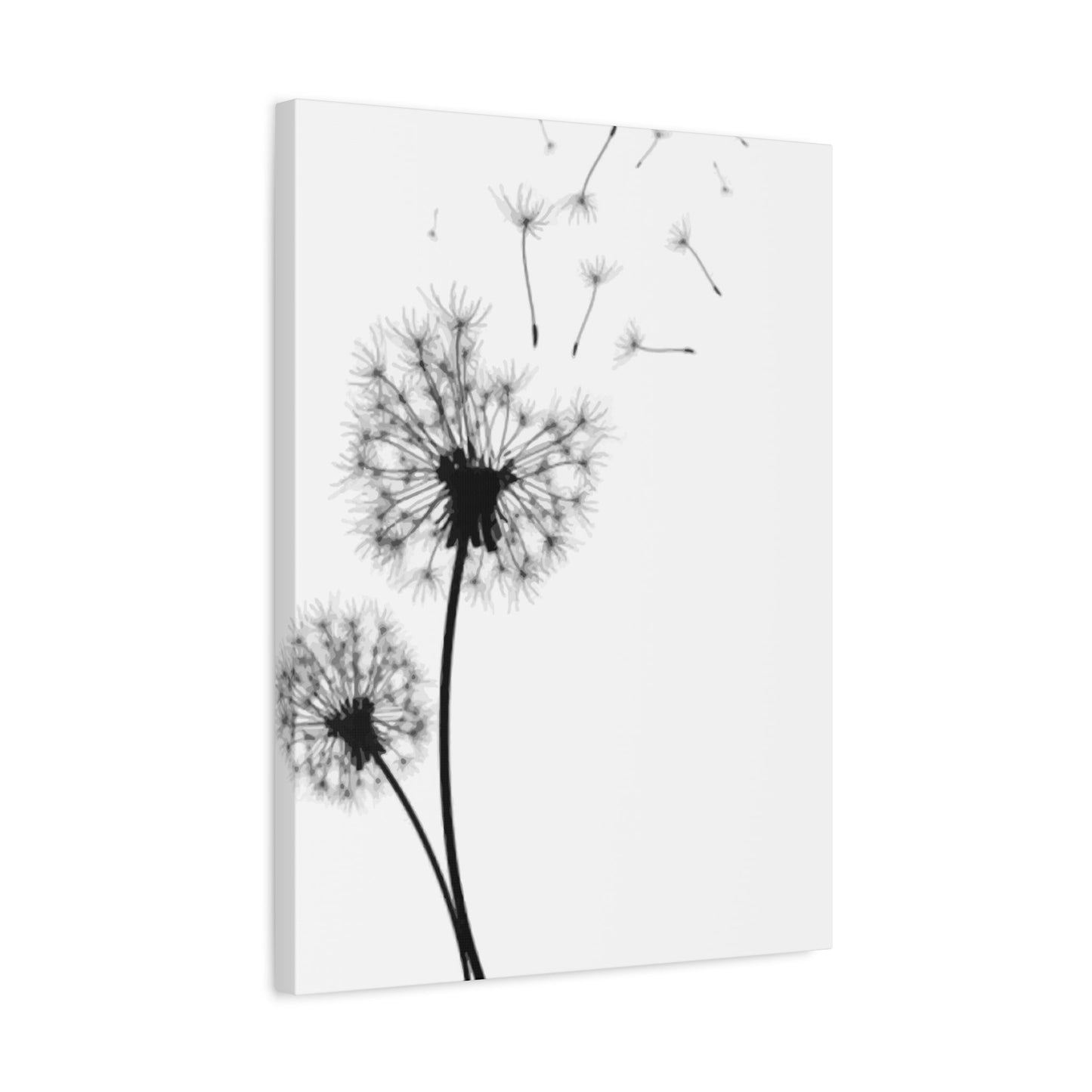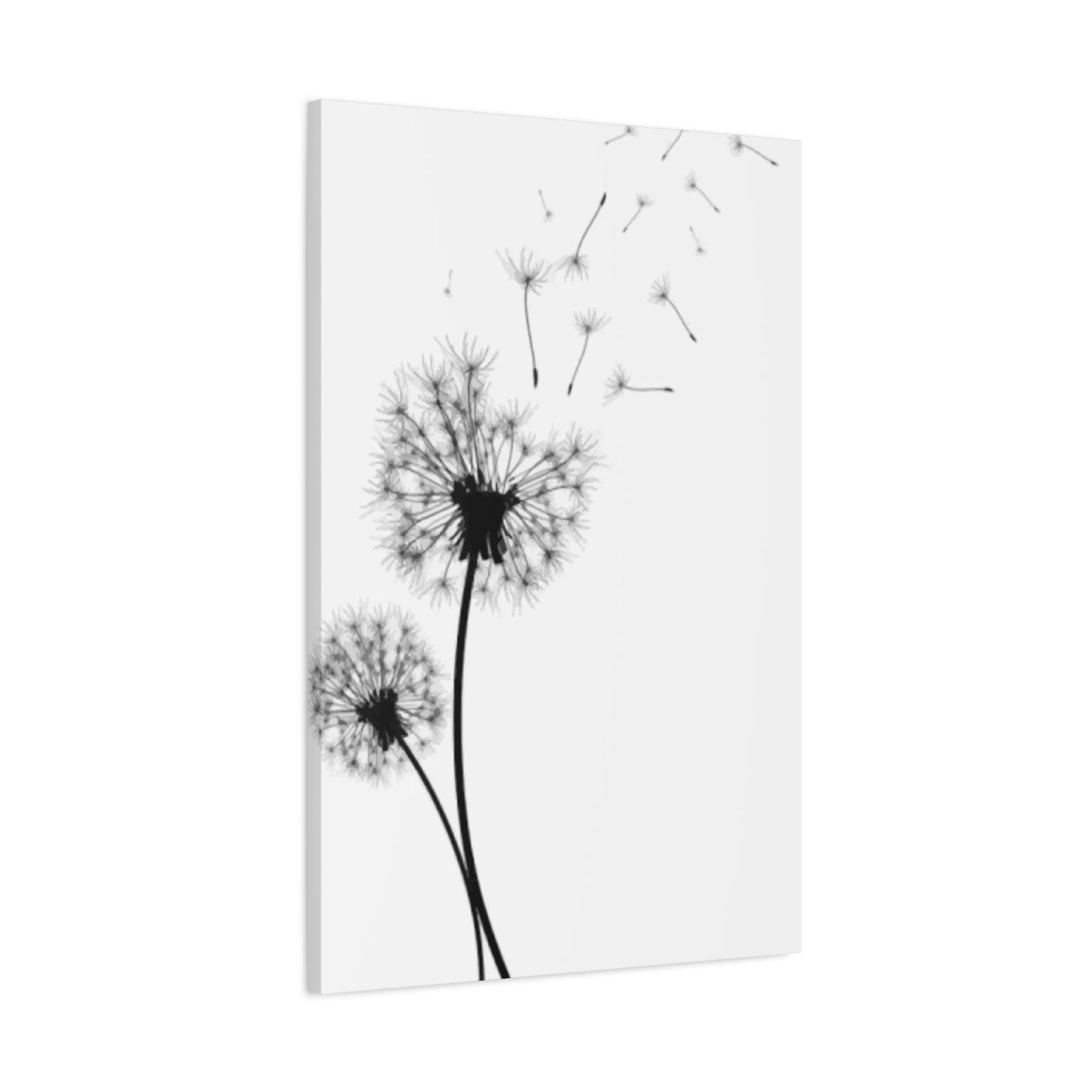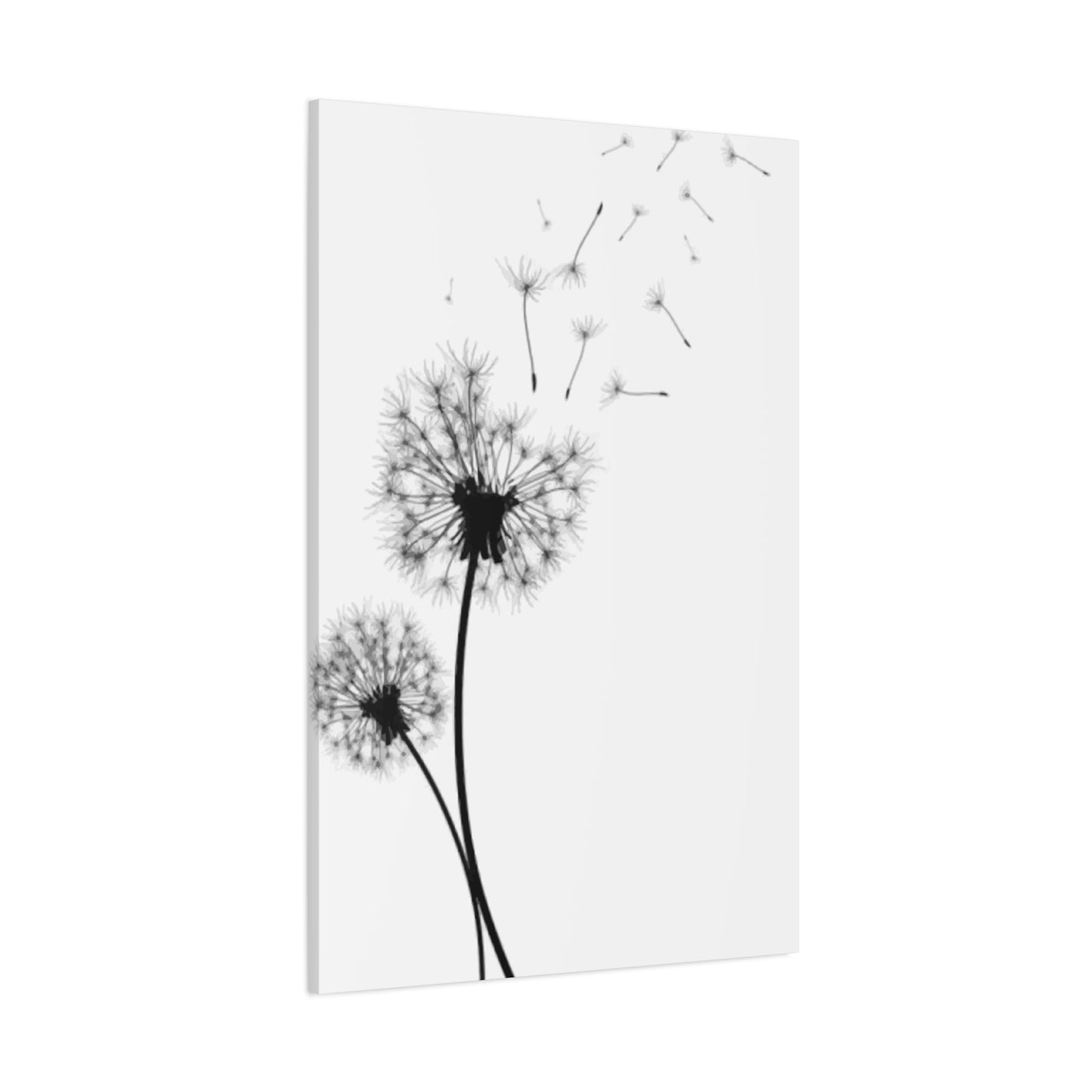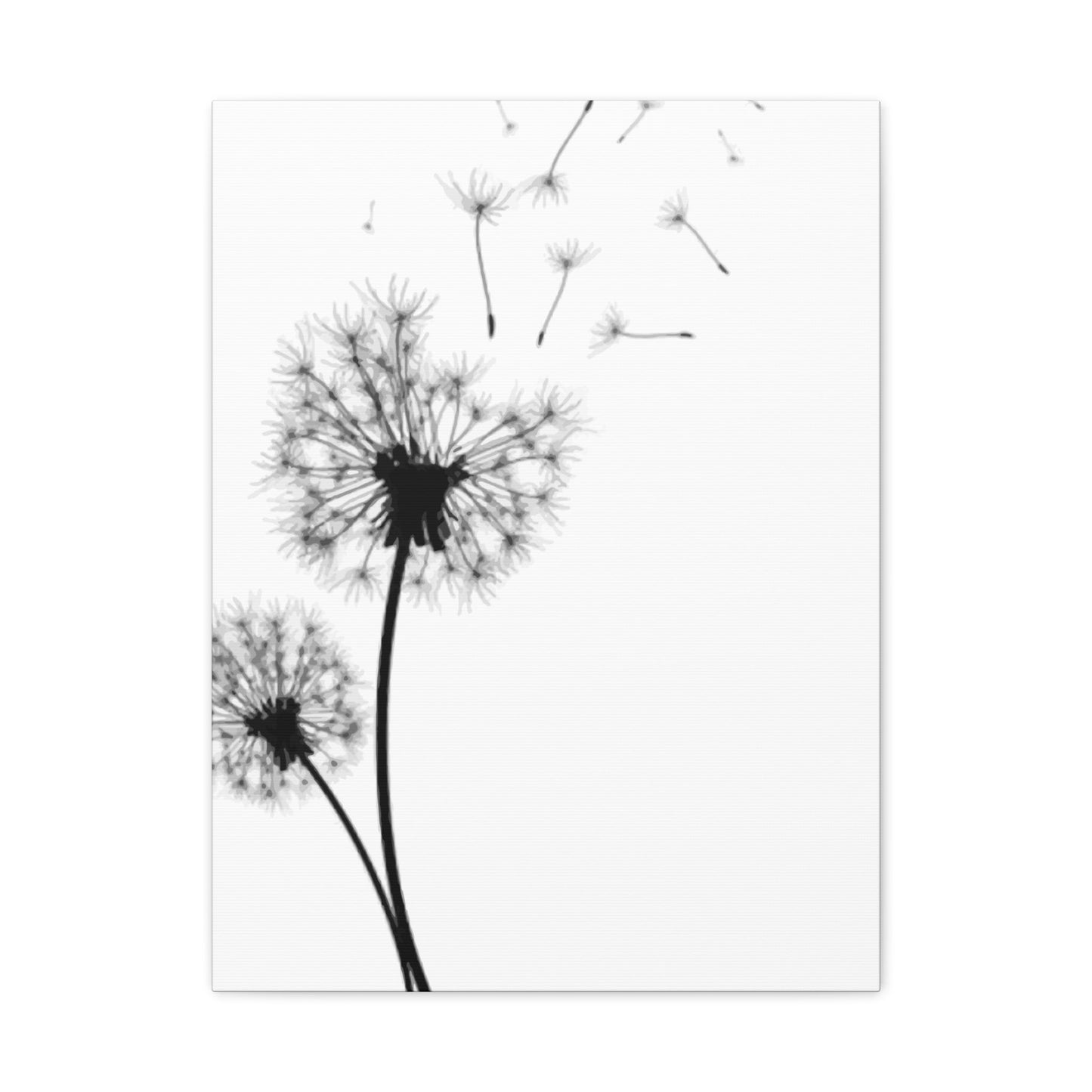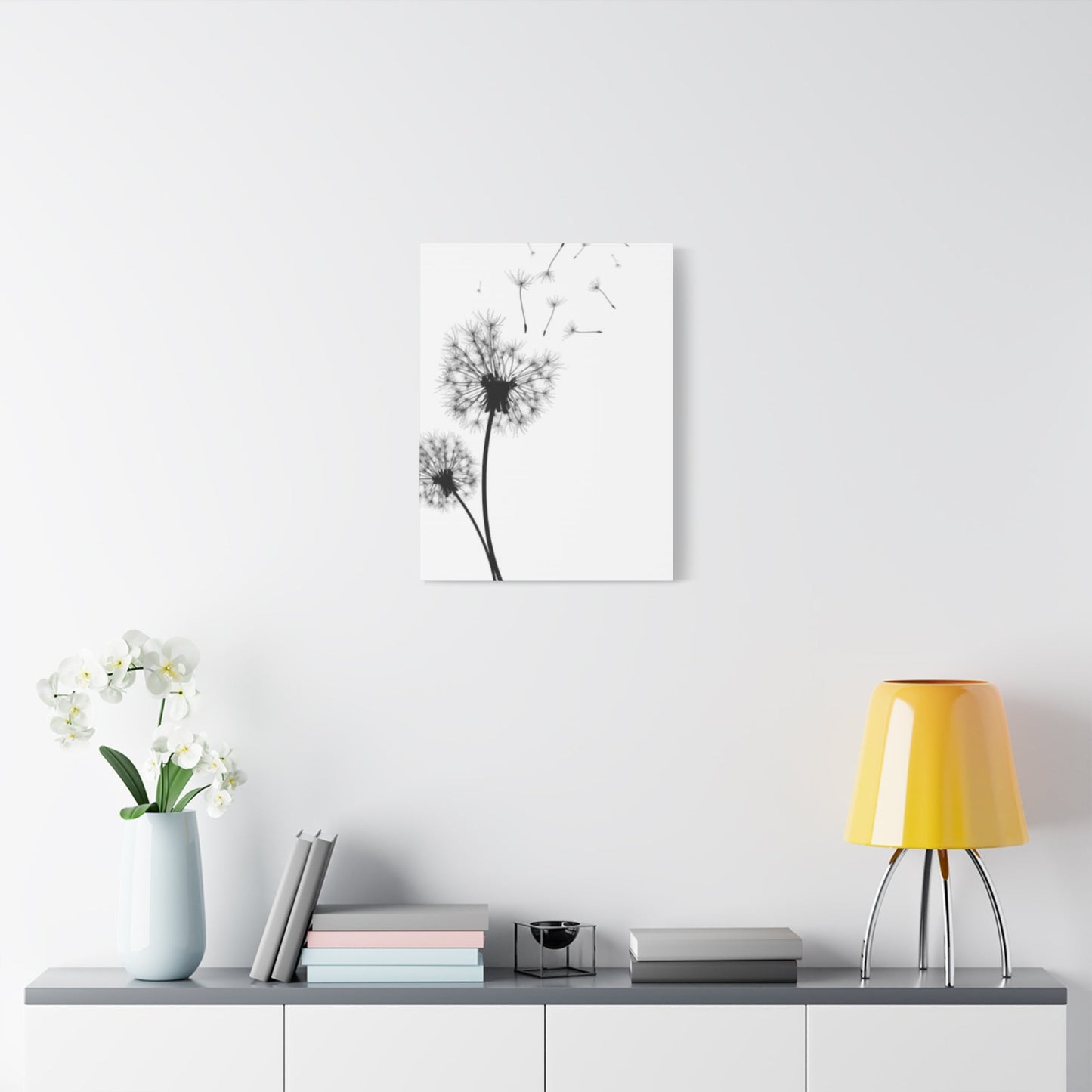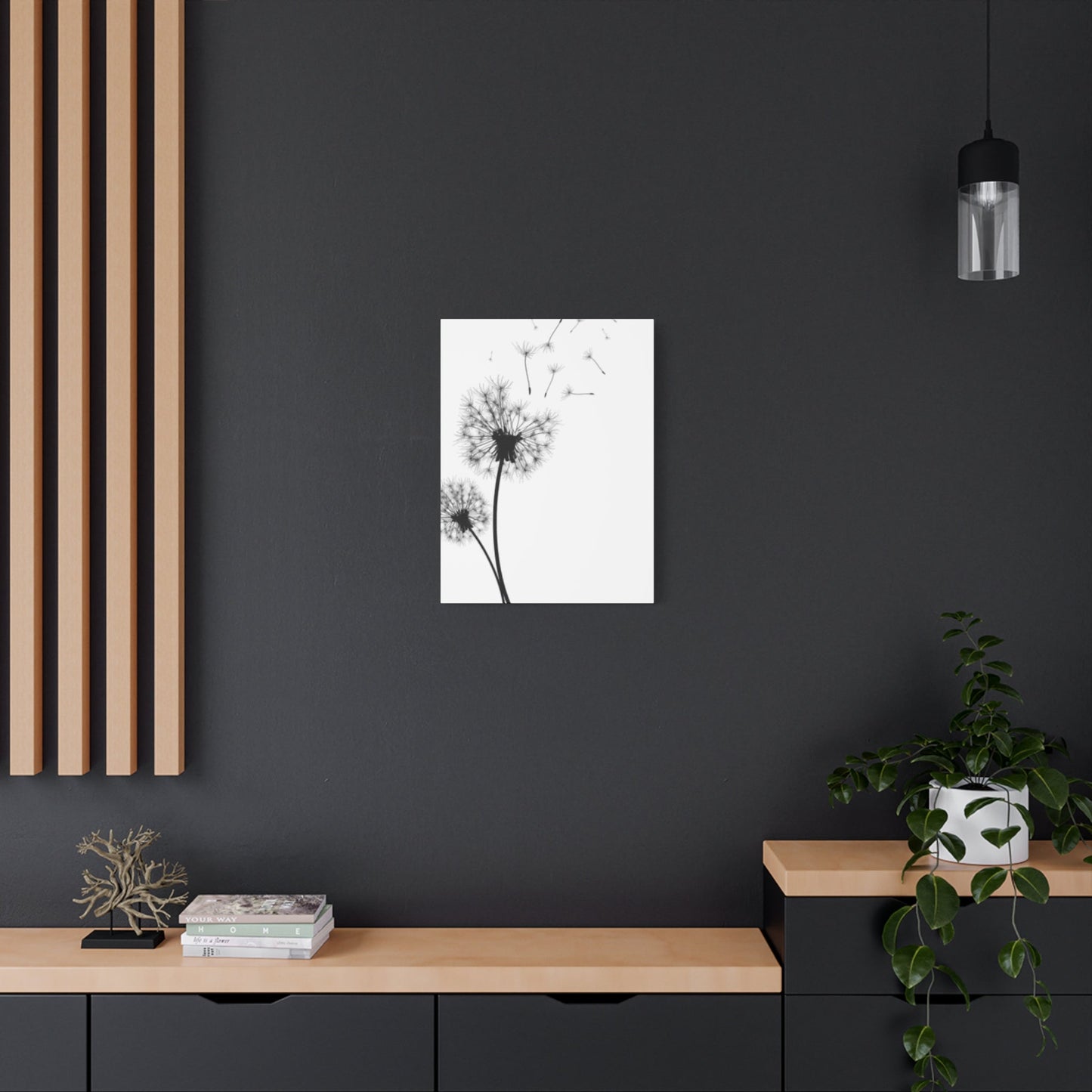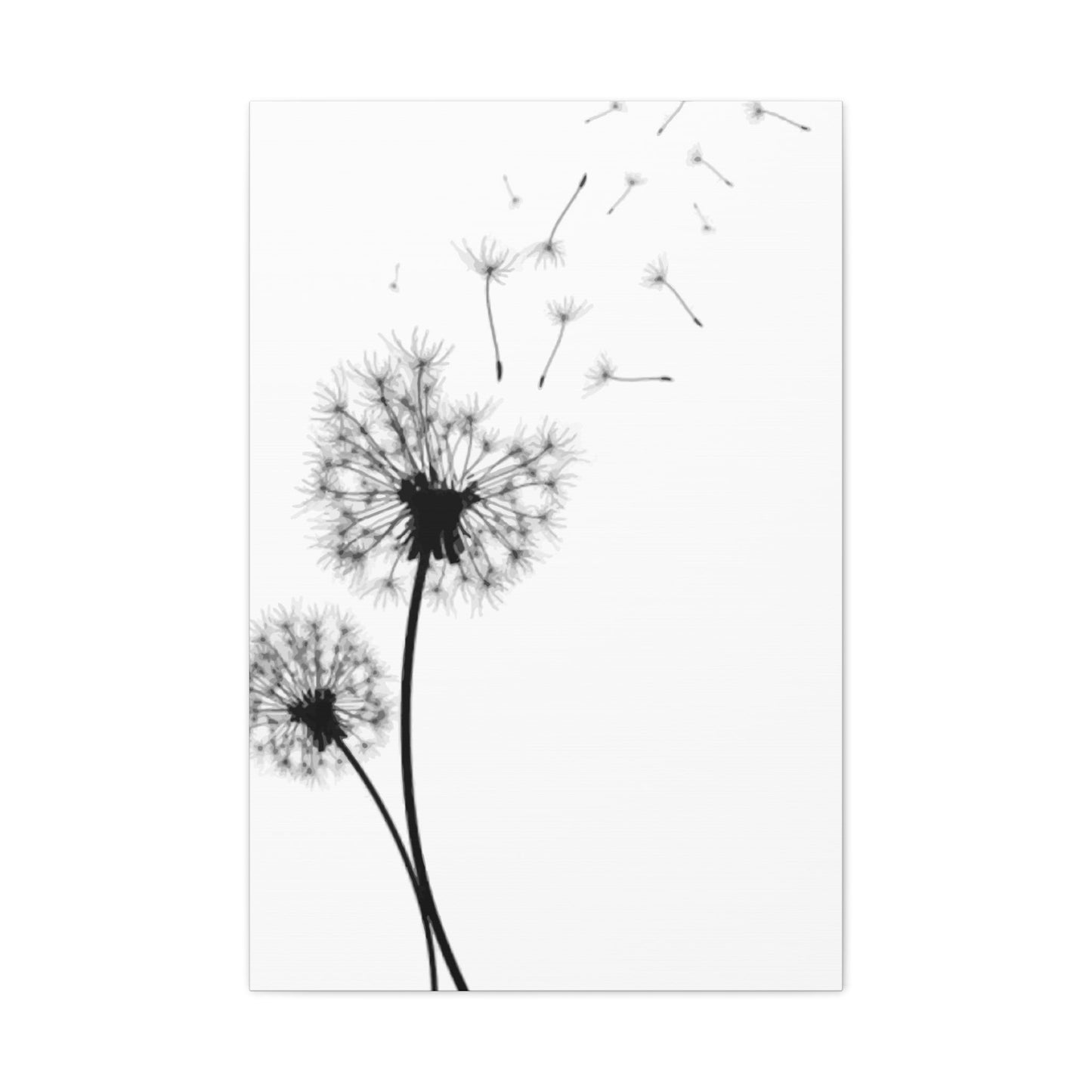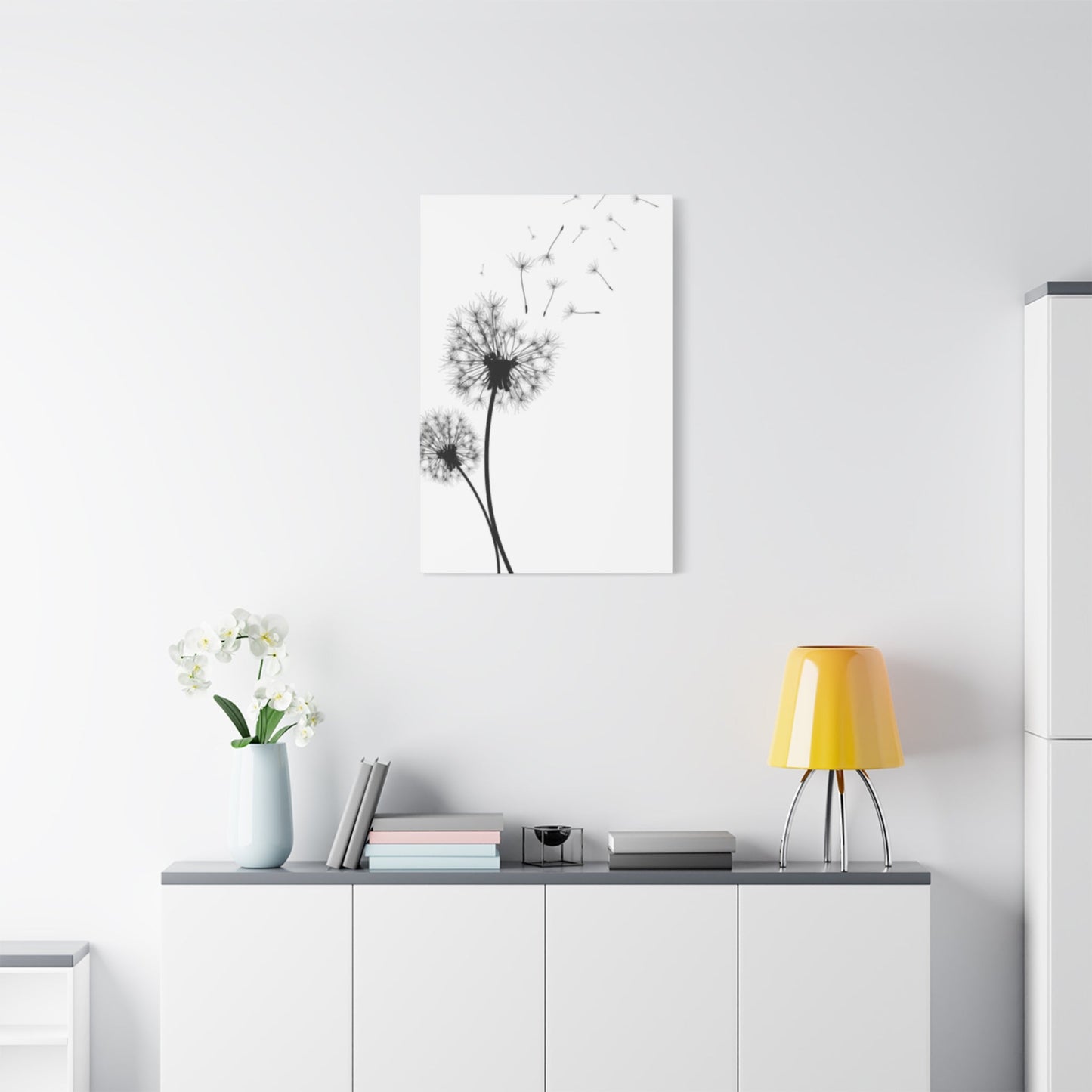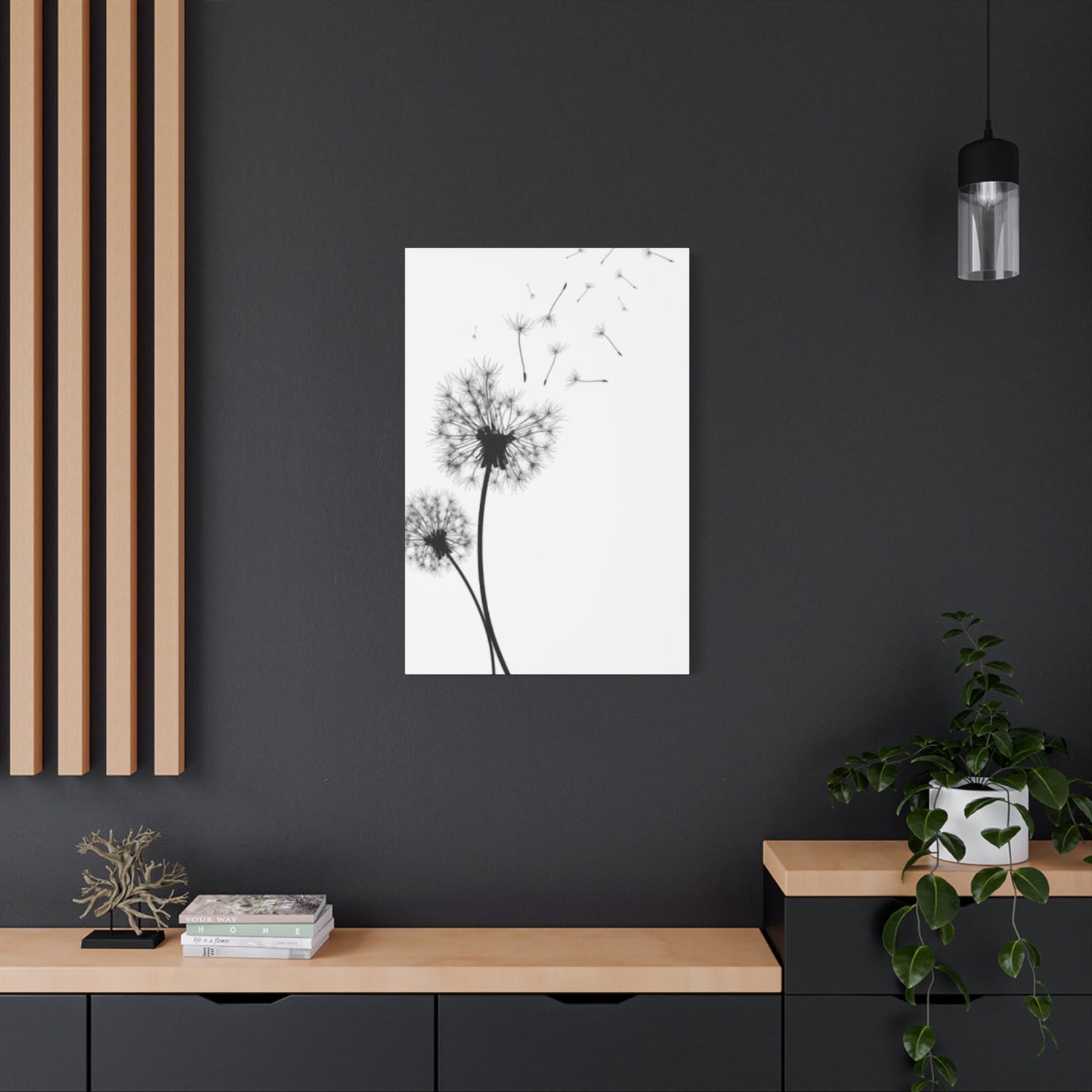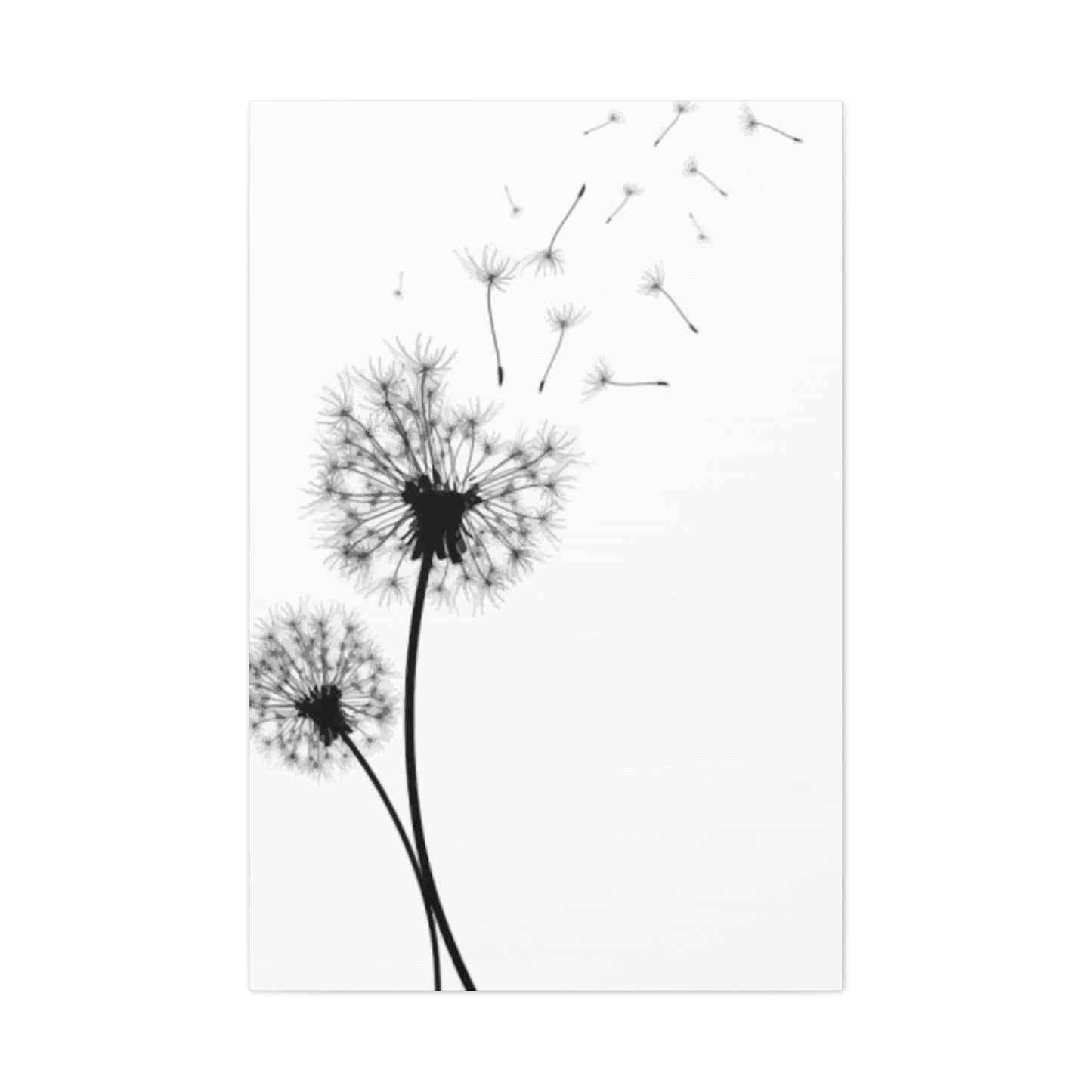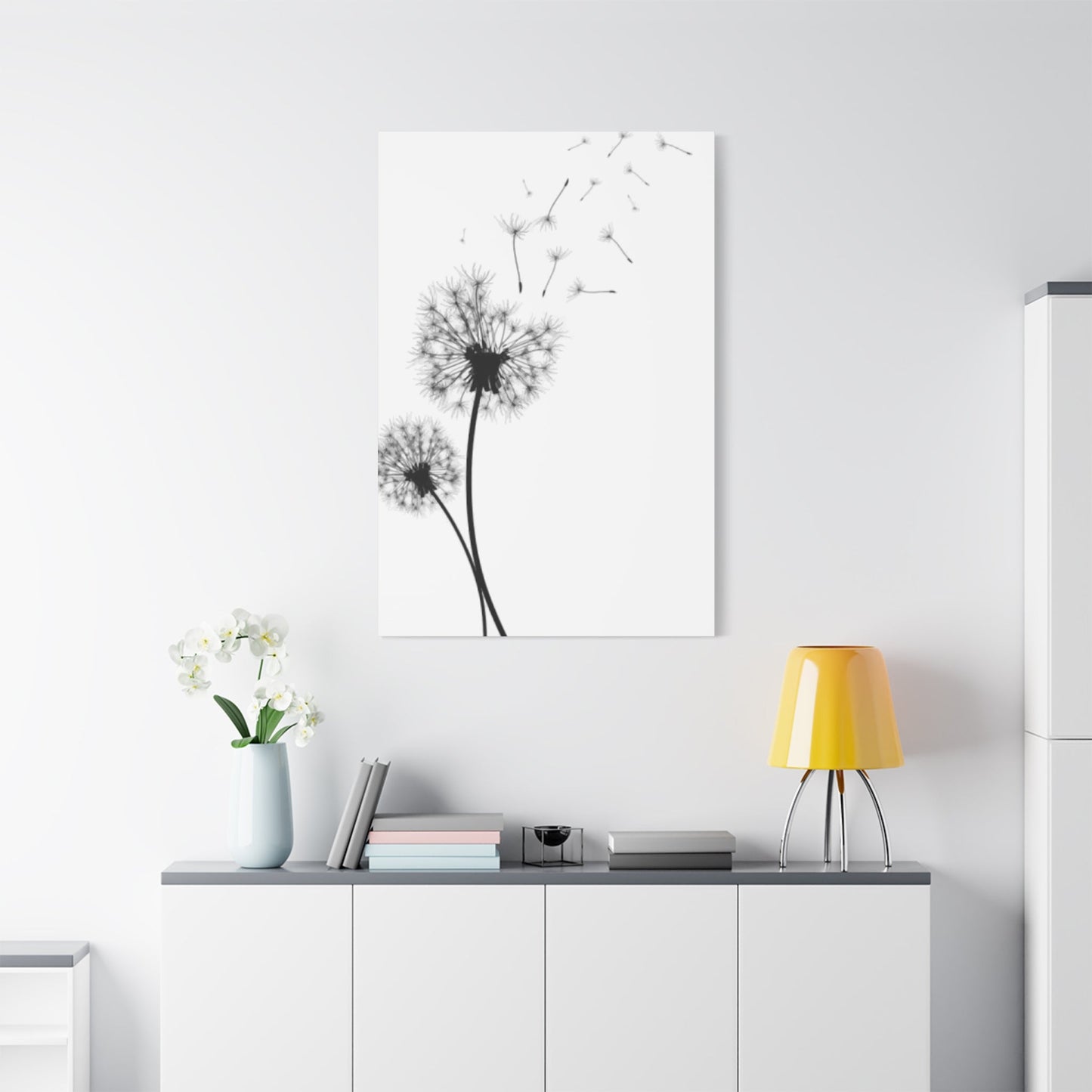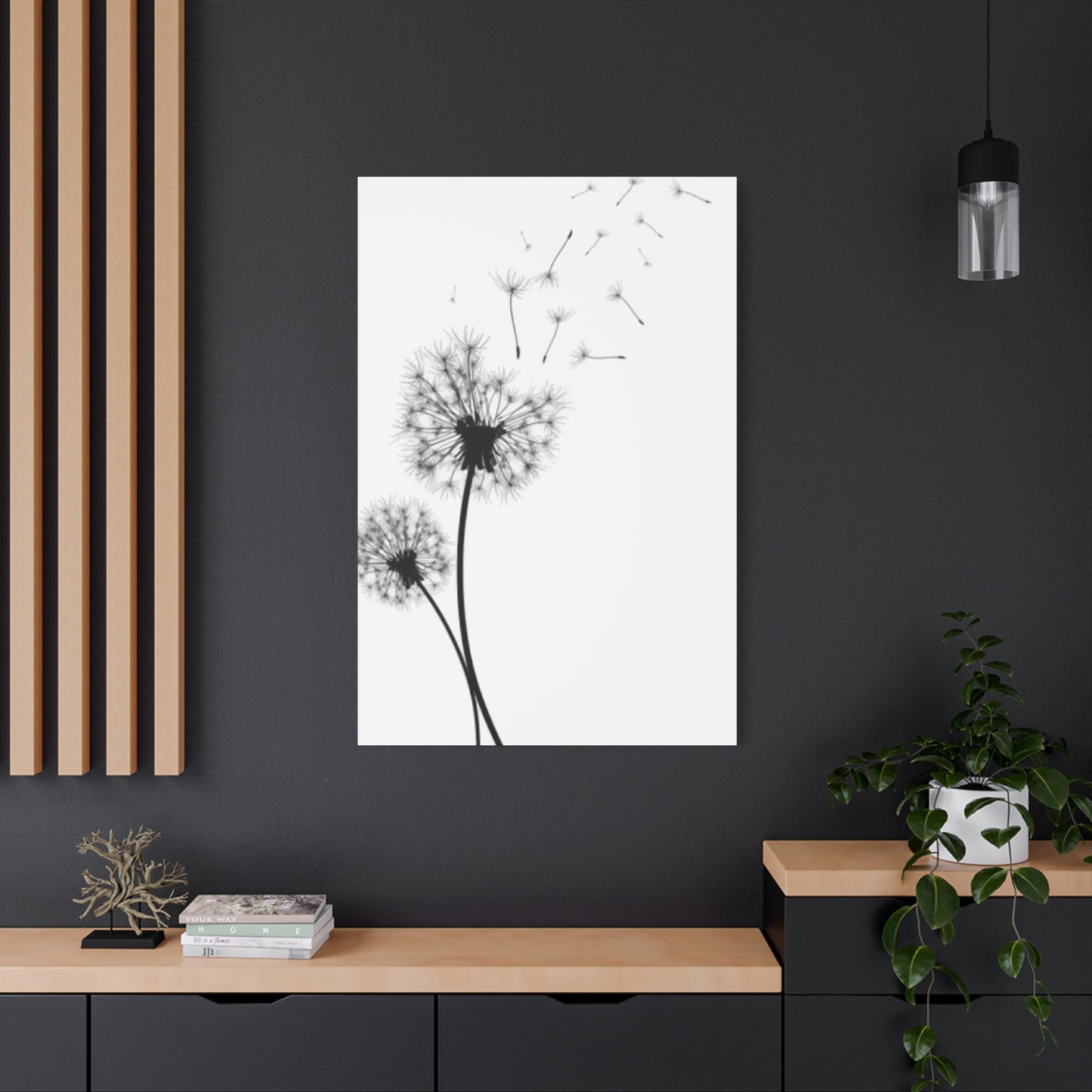Dandelion Seed Wall Art: Creating Serene Spaces with Delicate Stitched Botanicals
In the world of interior design, few decorative elements possess the gentle charm and timeless appeal of embroidered dandelion wall art. These delicate creations bring together the artistry of needlework with the natural beauty of one of nature's most recognizable wildflowers. As homeowners increasingly seek ways to create peaceful, mindful spaces, dandelion embroidery has emerged as a perfect solution for adding softness, texture, and tranquility to any room.
The art of embroidering dandelions on fabric transforms simple thread into captivating wall decor that speaks to both the heart and the eye. Whether displayed in modern minimalist homes or traditional country cottages, these handcrafted pieces offer a unique blend of sophistication and whimsy that complements virtually any design aesthetic. The flowing lines of dandelion seeds caught in an imaginary breeze create movement and life on otherwise static walls, while the gentle color palettes typically used in these pieces promote feelings of calm and serenity.
The Meditative Nature of Dandelion Embroidery Artworks
The inherent peacefulness found in dandelion embroidery stems from multiple sources, each contributing to the overall sense of tranquility these pieces bring to a space. The organic, flowing forms of dandelions naturally evoke feelings of freedom and lightness, reminiscent of childhood moments spent making wishes on dandelion seeds. This nostalgic connection creates an immediate emotional response that helps viewers feel more relaxed and at ease.
The soft, rhythmic patterns created by embroidery stitches mirror the gentle swaying of dandelions in a summer breeze. Unlike harsh geometric patterns or bold graphic designs, embroidered dandelions possess a fluidity that soothes the mind and encourages contemplation. The delicate nature of the threadwork itself requires patience and mindfulness to create, qualities that seem to transfer to viewers who spend time appreciating these handcrafted pieces.
Color plays a crucial role in the peaceful quality of dandelion embroidery. Most artists choose muted, natural tones that reflect the subtle beauty of real dandelions and their wispy seed heads. Soft grays, gentle browns, creamy whites, and pale yellows dominate these pieces, creating a cohesive palette that promotes relaxation rather than stimulation. These understated colors allow the embroidery to complement existing decor without overwhelming the space or competing for attention with other design elements.
The texture created by embroidery thread adds another layer of visual interest that contributes to the peaceful atmosphere. The raised surface of the stitches creates subtle shadows and highlights that change throughout the day as natural light shifts across the artwork. This dynamic quality keeps the piece visually engaging while maintaining its calming presence, offering viewers new details to discover during quiet moments of observation.
Incorporating Gentle Elegance Through Embroidered Dandelion Designs
Embroidered dandelions possess an innate ability to add soft charm to any interior space, transforming bare walls into focal points that draw the eye without demanding attention. The delicate nature of these botanical motifs makes them particularly well-suited for creating intimate, cozy atmospheres that invite relaxation and reflection. Unlike bold artwork that commands immediate notice, embroidered dandelions work subtly to enhance the overall ambiance of a room.
The charm of these pieces lies partially in their handmade quality, which adds warmth and personality to modern homes often filled with mass-produced items. Each stitch represents time and care invested by the artist, creating a connection between the maker and the viewer that manufactured wall art simply cannot provide. This human element adds depth and meaning to the decorative piece, making it more than just visual enhancement but a conversation starter and source of inspiration.
Embroidered dandelions work particularly well in spaces designed for rest and contemplation. Bedrooms benefit from the gentle presence of these artworks, as their soft colors and flowing forms promote the peaceful mindset necessary for quality sleep. Living rooms gain a touch of natural beauty that encourages family members and guests to slow down and appreciate quieter moments together. Even busy spaces like kitchens and home offices can benefit from the calming influence of dandelion embroidery, providing visual respites that help reduce stress throughout busy days.
The versatility of embroidered dandelion designs allows them to complement a wide range of interior design styles. In farmhouse decor, they enhance the rustic, handmade aesthetic while adding botanical elements that connect indoor spaces with the natural world. Modern minimalist interiors benefit from the clean lines and simple forms of dandelion embroidery, which provide visual interest without cluttering the space. Traditional homes can incorporate these pieces as subtle updates that honor classic design principles while introducing contemporary artistic elements.
Celebrating Natural Beauty Through Threaded Botanical Art
The marriage of nature and needlework in dandelion wall art creates a unique form of botanical decoration that brings the outdoors inside in the most gentle way possible. Unlike pressed flowers or botanical prints, embroidered dandelions capture the essence of these wildflowers while adding the textural richness that only handwork can provide. The three-dimensional quality of embroidery thread allows artists to create depth and movement that flat artwork cannot achieve.
Thread selection plays a crucial role in bringing dandelion embroidery to life. Artists often choose threads with subtle variations in tone and texture to mimic the natural complexity of real dandelions. Silk threads provide lustrous highlights that catch light beautifully, while cotton threads offer matte finishes that create more subdued, earthy appearances. Some artists incorporate metallic threads sparingly to suggest dewdrops or the shimmer of seeds catching sunlight, adding magical touches that enhance the whimsical nature of these pieces.
The fabric foundation chosen for dandelion embroidery significantly impacts the final appearance and feel of the artwork. Natural linen provides an ideal backdrop with its organic texture and neutral tones that complement the botanical subject matter. The slight irregularities in linen weave add to the handmade aesthetic while providing a stable foundation for detailed embroidery work. Cotton fabrics offer smoother surfaces that allow for finer detail work, while canvas provides durability for larger pieces intended as statement artwork.
Color relationships between thread and fabric create the overall mood of embroidered dandelion pieces. Monochromatic schemes using various shades of gray or brown create sophisticated, understated artwork that works well in contemporary interiors. Subtle color contrasts, such as cream thread on sage green fabric, provide gentle visual interest while maintaining the peaceful quality that makes these pieces so appealing for home decoration.
Creative Display Methods for Embroidered Dandelion Art
The presentation of embroidered dandelion artwork can significantly enhance its impact and integration into existing home decor. Simple display methods often prove most effective, allowing the delicate beauty of the embroidery to take center stage without competing with elaborate framing or mounting systems. The goal should be to showcase the handwork while maintaining the gentle, understated character that makes dandelion embroidery so appealing.
Embroidery hoops offer one of the most popular and effective display methods for dandelion artwork. The circular frame creates a natural border that focuses attention on the embroidered design while maintaining an organic, handmade appearance. Wooden hoops complement the natural theme of botanical embroidery, while painted hoops can coordinate with existing room colors. Multiple hoops of varying sizes can be grouped together to create gallery walls that tell a cohesive story while providing visual variety.
Traditional framing provides a more formal presentation option that works well in sophisticated interior settings. Simple frames in natural wood tones or painted finishes allow the embroidery to remain the focal point while providing protection and structure. Mat boards in neutral colors create breathing space around the artwork and prevent the embroidery from appearing cramped within the frame. Glass or acrylic glazing protects the delicate threadwork from dust and damage while allowing clear viewing.
Shadow box frames offer unique opportunities to display embroidered dandelions in three-dimensional presentations. The depth provided by these frames allows artists to create layered compositions that seem to float within the display space. This technique works particularly well for dandelion designs that incorporate dimensional elements or multiple layers of embroidery that benefit from the enhanced depth perception that shadow boxes provide.
Fabric mounting techniques allow embroidered dandelions to be displayed without traditional frames while still providing structure and protection. Stretching the embroidered fabric over artist canvas or wooden panels creates clean, modern presentations that work well in contemporary interiors. This mounting method allows the texture of the fabric foundation to contribute to the overall aesthetic while keeping costs lower than traditional framing options.
The Symbolic Significance of Dandelions in Decorative Needlework
Dandelions carry rich symbolic meaning that adds depth and significance to embroidered wall art, transforming simple decorative pieces into meaningful expressions of hope, resilience, and transformation. Throughout history and across cultures, dandelions have represented the ability to thrive in challenging conditions, making them powerful symbols for personal growth and perseverance. When incorporated into embroidery artwork, these symbolic associations create emotional connections that extend beyond mere visual appeal.
The transformation from bright yellow flower to delicate seed head represents the natural cycles of life, growth, and renewal that resonate deeply with viewers seeking meaningful home decor. Embroidered dandelions capture this transformative moment, often depicting the ethereal seed heads that children and adults alike associate with wish-making and dreams. The act of blowing dandelion seeds represents faith in the future and the belief that positive intentions can manifest into reality.
Resilience stands as another powerful symbolic aspect of dandelions that translates beautifully into embroidered art. These hardy wildflowers grow in diverse conditions and locations, from manicured lawns to abandoned lots, demonstrating remarkable adaptability and strength. For individuals facing personal challenges or life transitions, dandelion embroidery serves as gentle reminders of their own capacity for resilience and growth in difficult circumstances.
The concept of wishes and dreams associated with dandelion seeds adds layers of hope and optimism to embroidered artwork. Many people have childhood memories of making wishes on dandelion seed heads before blowing them into the wind, creating personal connections to these botanical motifs that extend well beyond their aesthetic appeal. Displaying embroidered dandelions in living spaces serves as daily reminders to maintain hope and continue working toward personal dreams and aspirations.
Freedom and release represent additional symbolic dimensions that make dandelion embroidery particularly appealing for meditation spaces and areas designated for relaxation. The image of seeds floating away on gentle breezes suggests letting go of worries and embracing natural flow rather than forcing outcomes. This symbolic meaning creates therapeutic value that extends the impact of dandelion embroidery beyond simple decoration into the realm of emotional and spiritual wellness.
Embracing Bohemian Style with Handstitched Dandelion Accents
Bohemian interior design celebrates artistic expression, natural elements, and handmade crafts, making embroidered dandelion art a perfect complement to this free-spirited aesthetic. The organic forms and gentle colors typically found in dandelion embroidery align beautifully with boho design principles that prioritize comfort, creativity, and connection to nature over formal rules and structured arrangements.
Layering different textures creates the eclectic, collected-over-time appearance that defines authentic bohemian style, and embroidered dandelions contribute unique textural elements that enhance this approach. The raised surface created by embroidery thread adds tactile interest that complements woven wall hangings, macrame artworks, and other fiber arts commonly found in boho interiors. The handmade quality of embroidered pieces reinforces the bohemian preference for artisan crafts over mass-produced decorations.
Color palettes in bohemian interiors often feature earthy, muted tones punctuated by richer jewel colors, and dandelion embroidery fits seamlessly into this approach. The natural colors associated with dandelions provide neutral foundations that ground more vibrant elements while adding botanical beauty that connects interior spaces with the natural world. Multiple pieces of dandelion embroidery in varying sizes and color combinations can create gallery walls that serve as focal points while maintaining the relaxed, organic feeling that characterizes successful boho design.
Mixed media approaches work particularly well when incorporating embroidered dandelions into bohemian decor schemes. Combining embroidery with other artistic techniques such as painting, printing, or mixed fiber arts creates unique pieces that reflect the creative, experimental spirit of boho style. These hybrid artworks can incorporate additional natural elements like dried flowers, feathers, or natural fibers that enhance the botanical theme while adding layers of visual and textural interest.
The placement of embroidered dandelion art in bohemian interiors should feel organic and uncontrived, reflecting the relaxed, intuitive approach that defines this design style. Rather than formal arrangements or symmetrical groupings, boho interiors benefit from seemingly casual placements that encourage discovery and contemplation. Embroidered dandelions work well in reading nooks, meditation corners, and other intimate spaces where their gentle presence can be appreciated during quiet moments.
Enhancing Wall Texture Through Embroidered Botanical Elements
Embroidery naturally creates textural interest that adds depth and dimension to wall displays, transforming flat surfaces into tactile experiences that engage multiple senses. The raised quality of embroidery thread creates subtle shadows and highlights that change throughout the day as lighting conditions shift, providing dynamic visual interest that keeps artwork fresh and engaging over time.
Different embroidery techniques produce varying textural effects that can be selected to complement specific interior design goals. French knots create bumpy, organic textures perfect for depicting dandelion seed heads, while satin stitches provide smooth, flowing areas that work well for stems and leaves. Long and short stitches can create gradual color transitions that mimic the natural variations found in real dandelions, adding realistic detail that enhances the botanical accuracy of the artwork.
Thread selection significantly impacts the textural qualities of embroidered dandelion art. Wool threads create soft, matte textures that work well in cozy, traditional interiors, while silk threads provide lustrous surfaces that catch light beautifully in more formal settings. Cotton threads offer versatility and durability with moderate sheen levels that work well in most interior contexts. Some artists combine multiple thread types within single pieces to create complex textural landscapes that reward close examination.
The fabric foundation contributes its own textural element to embroidered artwork, and the interaction between fabric texture and thread texture creates the overall tactile experience. Smooth fabrics like cotton allow embroidery details to stand out prominently, while textured fabrics like linen add additional layers of surface interest that create more complex visual experiences. The choice of fabric color and texture should complement rather than compete with the embroidery work while contributing to the overall aesthetic goals of the piece.
Lighting plays a crucial role in showcasing the textural qualities of embroidered dandelion art. Natural light from windows creates changing highlights and shadows throughout the day that keep artwork visually dynamic, while artificial lighting can be positioned to emphasize specific textural elements. Directional lighting from track systems or picture lights can create dramatic effects that showcase the three-dimensional qualities of embroidery work, particularly during evening hours when natural light is unavailable.
Creating Tranquil Environments Through Gentle Artistic Expression
The foundation of any peaceful interior space lies in the careful selection and arrangement of elements that promote relaxation rather than stimulation. Soft art, characterized by muted colors, organic forms, and gentle subject matter, plays a crucial role in establishing the calm atmosphere necessary for rest and rejuvenation. Embroidered dandelion art exemplifies soft art principles through its delicate execution, natural subject matter, and understated color palettes.
Color psychology research demonstrates that certain colors promote relaxation while others increase alertness and energy levels. The natural color palette associated with dandelion embroidery typically includes soft grays, gentle browns, cream whites, and pale yellows that fall within the relaxing category. These colors work together to create cohesive visual experiences that support rather than compete with the goal of creating peaceful interior environments.
The organic, flowing forms found in dandelion embroidery contrast beautifully with the angular, geometric shapes that dominate most architectural elements and furniture designs. This contrast provides visual relief that helps soften hard edges while introducing natural elements that connect interior spaces with the calming influence of the natural world. The gentle curves and flowing lines of embroidered dandelions create movement that feels natural and soothing rather than jarring or disruptive.
Scale and proportion considerations become particularly important when using soft art to create calming environments. Oversized artwork can overwhelm spaces and create stress rather than tranquility, while pieces that are too small may get lost and fail to provide the visual anchor necessary for creating focal points. Dandelion embroidery works best when sized appropriately for the space and viewing distance, allowing viewers to appreciate both the overall composition and individual stitch details.
Grouping multiple pieces of dandelion embroidery can create more significant visual impact while maintaining the gentle, peaceful quality that makes these artworks so effective for creating calm spaces. Odd numbers of pieces typically create more pleasing arrangements than even numbers, while varying the sizes and orientations of individual pieces adds visual interest without creating chaos. The key lies in maintaining enough similarity between pieces to create cohesion while providing enough variety to prevent monotony.
Mindful Interior Design Through Contemplative Wall Art
Mindful living principles emphasize the importance of creating interior environments that support mental and emotional well-being through thoughtful selection and arrangement of furnishings and decorative elements. Wall art plays a particularly important role in mindful interiors because it often serves as focal points that draw attention and influence mood throughout daily activities. Dandelion wall art supports mindful living through its gentle presence and meaningful symbolism.
The practice of mindfulness involves paying attention to present moment experiences without judgment, and contemplative wall art can serve as visual anchors that support this practice. Embroidered dandelions provide ideal subjects for contemplation due to their organic complexity and symbolic richness. The flowing forms and delicate details reward careful observation while the peaceful color palettes promote the relaxed awareness that characterizes mindful states.
Placement considerations become crucial when incorporating contemplative wall art into mindful interiors. Pieces should be positioned where they can be viewed comfortably during moments of rest and reflection, such as meditation corners, reading nooks, or bedside areas. The goal is to create opportunities for peaceful observation that support rather than interrupt daily mindfulness practices.
The handmade quality of embroidered dandelion art adds authenticity and meaning that support mindful living principles. In a world increasingly dominated by mass-produced items and digital experiences, handcrafted objects provide tangible connections to human creativity and patience. The visible stitches and slight irregularities that characterize handmade embroidery serve as reminders of the time and care invested in creating beautiful objects, encouraging appreciation for craftsmanship and attention to detail.
Seasonal awareness represents another aspect of mindful living that dandelion wall art can support. The natural lifecycle represented by dandelions from flower to seed head mirrors the seasonal changes that mindful individuals strive to notice and appreciate. Displaying embroidered dandelions throughout the year serves as gentle reminders to stay connected with natural rhythms and cycles, even when living in urban environments far removed from wild dandelion patches.
Celebrating Artisan Craftsmanship in Contemporary Home Decor
The revival of interest in handmade crafts reflects a growing appreciation for artisan skills and the unique qualities that distinguish handcrafted items from mass-produced alternatives. Embroidered dandelion art represents the intersection of traditional needlework techniques with contemporary aesthetic sensibilities, creating pieces that honor historical craft traditions while addressing modern decorative needs and preferences.
Individual variation characterizes all handmade items, and this uniqueness adds value that cannot be replicated through manufacturing processes. Each embroidered dandelion carries the personal touch of its creator, from the selection of colors and materials to the specific techniques used to bring the design to life. These individual characteristics create one-of-a-kind artworks that provide personal satisfaction and conversation opportunities that mass-produced decorations simply cannot offer.
The time investment required to create embroidered dandelion art adds layers of meaning that enhance its value beyond mere aesthetic consideration. Each stitch represents a moment of focused attention and creative intention, accumulating over hours or days to create finished pieces that embody patience, skill, and dedication. This investment of time and energy creates emotional connections between creators and their work that transfer to viewers and collectors who appreciate handmade beauty.
Supporting artisan crafts through purchasing and displaying handmade embroidered dandelion art contributes to preserving traditional skills and encouraging contemporary crafters to continue developing their abilities. This support system helps maintain cultural traditions while providing income opportunities for skilled craftspeople who choose to focus their creative energies on traditional techniques adapted for modern applications.
The sustainability aspects of handmade crafts align with growing environmental consciousness among consumers who seek alternatives to fast fashion and disposable decorative items. Embroidered dandelion art, when created with quality materials and proper construction techniques, can last for decades while maintaining its beauty and relevance. This longevity makes handmade embroidery an environmentally responsible choice for consumers seeking durable, meaningful home decorations.
Achieving Sophisticated Simplicity Through Delicate Needlework
Sophisticated simplicity represents a design philosophy that emphasizes quality over quantity, choosing fewer items of superior craftsmanship and aesthetic merit rather than filling spaces with numerous decorative objects. Embroidered dandelions exemplify this approach through their refined execution and understated beauty that works effectively as standalone statement pieces or as part of carefully curated collections.
The delicate nature of dandelion embroidery requires viewers to slow down and appreciate subtle details that might be overlooked in busier environments filled with competing visual elements. This quality makes embroidered dandelions particularly valuable for creating sophisticated interiors that reward contemplation and close observation. The gentle colors and flowing forms provide visual interest without overwhelming other design elements or demanding constant attention.
Restraint in color selection contributes significantly to the sophisticated appearance of dandelion embroidery. Rather than using bright, attention-grabbing hues, artists typically choose muted, harmonious color palettes that create cohesive visual experiences. This approach allows the skill of the needlework and the beauty of the design to take precedence over color impact, resulting in artwork that maintains its appeal over time rather than becoming dated or tiresome.
The technical skill required to execute high-quality dandelion embroidery adds to its sophisticated appeal, as discerning viewers can appreciate the craftsmanship involved in creating smooth, even stitches and well-balanced compositions. The mastery required to translate the organic complexity of dandelions into thread and fabric demonstrates artistic skill that elevates these pieces beyond simple craft projects into the realm of fine decorative art.
Versatility represents another aspect of sophisticated simplicity that dandelion embroidery provides. These pieces work effectively in various interior styles and color schemes without requiring significant changes to existing decor. This adaptability makes embroidered dandelions wise investments for individuals who prefer to update their interiors through subtle additions rather than complete redecoration projects.
Thoughtful Gift Ideas Featuring Embroidered Botanical Art
Embroidered dandelion hoop art makes exceptional gifts that combine aesthetic appeal with personal meaning, creating presents that recipients can treasure for years while enjoying daily in their living spaces. The handmade quality of these pieces adds sentimental value that manufactured gifts cannot provide, while the peaceful subject matter ensures broad appeal across different age groups and personal style preferences.
Wedding gifts benefit particularly from the symbolic richness of dandelion embroidery, as the themes of wishes, dreams, and new beginnings align perfectly with the hopes and aspirations associated with marriage. Custom pieces can incorporate wedding dates, initials, or special color schemes that create personalized artwork celebrating unique relationships. The lasting nature of quality embroidery ensures that these gifts will serve as meaningful reminders of special occasions for decades to come.
Housewarming presents should help new homeowners create comfortable, welcoming environments, and embroidered dandelion art serves this purpose beautifully through its ability to soften hard architectural elements while adding natural beauty to unfamiliar spaces. The portable nature of hoop art makes it easy for recipients to move pieces as they experiment with furniture arrangements and room layouts in their new homes.
New parent gifts can incorporate the symbolic meaning of dandelions as representations of wishes and dreams for the future, making embroidered dandelion nursery art particularly appropriate for celebrating new arrivals. The gentle colors and peaceful subject matter create soothing environments that support rest for both babies and parents, while the handmade quality adds warmth and personal connection to nursery decor.
Sympathy and comfort gifts require special sensitivity, and the symbolic associations of dandelions with resilience, renewal, and hope make embroidered dandelion art appropriate for expressing support during difficult times. The peaceful presence of these pieces can provide comfort without overwhelming grieving individuals, while the theme of transformation offers gentle reminders that growth and healing remain possible even after loss.
Professional Presentation Techniques for Embroidered Art
Proper framing techniques significantly impact the longevity and appearance of embroidered dandelion artwork, making professional presentation methods essential for preserving these handmade treasures while showcasing them to best advantage. The choice of framing materials and methods should complement the delicate nature of embroidery while providing adequate protection from environmental factors that could damage thread and fabric over time.
Acid-free materials form the foundation of archival framing systems that prevent deterioration caused by chemical reactions between artwork and mounting materials. Mat boards, backing boards, and mounting adhesives should all meet archival standards to ensure that embroidered dandelions maintain their color and structural integrity over decades of display. The initial investment in quality framing materials pays dividends through extended artwork life and maintained aesthetic appeal.
Spacer systems prevent embroidered artwork from touching glazing materials, which could cause thread damage through compression or adhesion over time. The three-dimensional nature of embroidery requires breathing room that allows air circulation while preventing direct contact between threads and glass or acrylic surfaces. Properly designed spacer systems maintain this clearance while remaining invisible to viewers, preserving the clean appearance of framed artwork.
Conservation glazing materials filter harmful ultraviolet radiation that can fade threads and weaken fabric foundations over time. Museum-quality glazing options provide maximum protection while maintaining optical clarity that allows true color appreciation. The investment in conservation glazing proves worthwhile for valuable embroidered pieces that merit long-term preservation and display.
Climate considerations affect the presentation and preservation of embroidered dandelion art, particularly in environments with extreme temperature or humidity fluctuations. Sealed framing systems protect artwork from moisture and pollutants while maintaining stable internal conditions that prevent expansion and contraction cycles that could damage threads or fabric. Proper environmental control extends the life of embroidered artwork while maintaining optimal viewing conditions.
Integrating Embroidery with Diverse Wall Art Collections
Successful art collections demonstrate cohesive vision while providing enough variety to maintain visual interest and prevent monotony. Integrating embroidered dandelion pieces with other wall art forms requires careful attention to color relationships, scale proportions, and thematic connections that create harmonious groupings without sacrificing individual artwork identity.
Color coordination serves as the primary unifying element when combining embroidered pieces with paintings, prints, and photographs. The neutral color palette typically found in dandelion embroidery provides an excellent foundation for collections that might include more colorful pieces, as the muted tones serve as visual resting points that prevent overwhelming displays. Repeating key colors from embroidered pieces in other artworks creates subtle connections that tie collections together.
Scale variation adds visual dynamics to wall art collections while ensuring that individual pieces maintain appropriate proportions within their display contexts. Large paintings or prints can anchor collections while smaller embroidered pieces provide intimate details that reward closer examination. The key lies in creating balanced arrangements where no single piece overwhelms others while each contributes meaningfully to the overall composition.
Thematic connections link disparate artwork types through shared subject matter, mood, or symbolic meaning. Botanical themes work particularly well for connecting embroidered dandelions with nature photography, pressed flower displays, or painted landscapes that share similar subject matter. Abstract pieces can connect through shared color palettes or emotional qualities rather than literal subject matter representation.
Textural variety adds depth and interest to mixed media wall art collections, and embroidered pieces contribute unique tactile qualities that complement smooth surfaces found in paintings and prints. The raised surface of embroidery thread creates shadows and highlights that change throughout the day, adding dynamic elements that keep collections visually fresh and engaging over time.
Frame selection influences the success of mixed artwork displays by providing either unifying elements that tie diverse pieces together or contrasting elements that highlight individual artwork characteristics. Consistent frame styles create cohesive appearances that work well in formal settings, while varied frames can add visual interest that complements more casual, eclectic decorating approaches.
Exploring Neutral Color Palettes in Embroidered Design
Neutral color schemes provide versatile foundations for interior design projects while offering timeless appeal that transcends seasonal trends and style changes. Soft neutrals work particularly well with dandelion embroidery because they complement the natural color palette associated with these botanical subjects while providing flexibility for incorporating accent colors through accessories and seasonal decorations.
Warm neutrals including cream, beige, soft brown, and pale yellow create cozy atmospheres that work well in traditional and transitional interior styles. These colors evoke feelings of comfort and security while providing enough color interest to prevent blandness. Dandelion embroidery executed in warm neutral palettes complements wood furniture finishes and natural fiber textiles commonly found in these decorating approaches.
Cool neutrals such as gray, soft blue-gray, and pale sage green create sophisticated, contemporary appearances that work well in modern and minimalist interiors. These colors promote feelings of calm and clarity while providing clean backdrops that showcase architectural features and furniture designs. Cool neutral dandelion embroidery works particularly well in urban environments where connections to nature provide welcome relief from concrete and steel surroundings.
Monochromatic neutral schemes use various values and intensities of single colors to create sophisticated, unified appearances that demonstrate refined aesthetic sensibilities. Embroidered dandelions executed in monochromatic grays or browns showcase the technical skill involved in needlework while creating artwork that integrates seamlessly with neutral interior color schemes. These pieces work as accent elements that add texture and interest without introducing color complexity.
Layered neutral approaches combine multiple neutral colors in ways that create depth and visual interest while maintaining the calming qualities associated with neutral color palettes. Successful layered neutral schemes require careful attention to undertones and color relationships to prevent muddy or confused appearances. Dandelion embroidery provides ideal subjects for exploring layered neutrals because the natural complexity of botanical forms supports subtle color variations that add richness without overwhelming simplicity.
Wish-Themed Decorative Elements and Their Cultural Significance
The tradition of making wishes on dandelion seed heads spans cultures and generations, creating universal connections that add depth and meaning to embroidered dandelion art. This shared cultural experience transforms simple botanical motifs into symbols of hope, possibility, and the human tendency to believe in positive outcomes despite uncertain circumstances.
Childhood memories associated with dandelion wishes create emotional connections that extend well into adulthood, making embroidered dandelions particularly meaningful for family spaces where multiple generations gather. The sight of embroidered dandelion seeds floating away on imaginary breezes can trigger pleasant memories of carefree summer days and innocent faith in the power of wishes to influence reality.
The ritualistic aspects of making dandelion wishes involve specific actions and intentions that add ceremonial significance to what might otherwise be dismissed as simple superstition. The act of taking a deep breath, making a silent wish, and blowing seeds into the wind creates mindful moments that interrupt busy routines with opportunities for reflection and hope. Displaying embroidered dandelions can serve as reminders to maintain this sense of possibility and wonder in daily life.
Cross-cultural research reveals similar wish-making traditions involving various plants and natural phenomena across different societies, suggesting that the human need to express hopes and desires through symbolic actions represents a fundamental aspect of human nature. Embroidered dandelions tap into this universal tendency while providing specific cultural connections for viewers familiar with Western European traditions.
Contemporary applications of wish symbolism extend beyond childhood games into adult practices including meditation, goal-setting, and manifestation techniques that use visualization and intention to promote positive outcomes. Embroidered dandelion art can support these practices by serving as focal points for meditation or visual reminders of personal goals and aspirations.
The ephemeral nature of real dandelion seeds adds poignancy to wish-making traditions by emphasizing the fleeting opportunities that life presents for positive change and growth. Embroidered dandelions capture this moment of possibility permanently, creating lasting reminders that wishes and dreams deserve attention and nurturing even when immediate fulfillment seems unlikely.
Botanical Themes in Cozy Interior Spaces
Botanical design elements bring the calming influence of nature into interior spaces while providing organic counterpoints to the angular, geometric forms that dominate most architectural and furniture designs. Embroidered botanical art works particularly well in cozy spaces designed for relaxation and comfort because the handmade quality adds warmth while the natural subject matter promotes connection with the outdoors.
Reading nooks benefit significantly from botanical embroidery because these intimate spaces require decorative elements that support rather than distract from contemplative activities. The gentle colors and flowing forms of embroidered dandelions create peaceful backdrops for reading while the handmade quality adds personal touches that make spaces feel more welcoming and comfortable.
Bedroom environments rely on botanical elements to promote rest and relaxation through their associations with natural cycles and seasonal changes. Dandelion embroidery works particularly well in bedrooms because the soft color palettes promote calm mental states while the symbolic associations with wishes and dreams complement the restorative functions of sleep and dreaming.
Kitchen breakfast nooks gain warmth and personality through botanical embroidery that connects meal preparation and consumption with natural rhythms and seasonal awareness. The organic forms of embroidered dandelions soften hard surfaces typically found in kitchen environments while adding decorative elements that celebrate the connection between food preparation and natural processes.
Home office spaces benefit from botanical elements that provide visual relief from technology and paperwork while maintaining the peaceful atmospheres necessary for focused work. Embroidered dandelions offer ideal solutions because they provide natural beauty without the maintenance requirements of live plants that might suffer in interior environments with limited natural light.
Bathroom spaces often lack natural elements due to moisture concerns that make live plants impractical in many situations. Embroidered botanical art provides nature-inspired decoration that withstands humid conditions while adding softness to spaces dominated by hard surfaces and utilitarian fixtures. The water-resistant qualities of properly executed embroidery make these pieces suitable for bathroom display when properly framed and protected.
Maximizing Impact Through Minimalist Artistic Approaches
Small-scale artwork can create significant visual impact when properly selected and presented, demonstrating that decorative effectiveness depends more on quality and placement than size alone. Embroidered dandelion art exemplifies this principle through its ability to transform spaces with subtle beauty that rewards close attention while working effectively as part of larger decorative schemes.
Strategic placement maximizes the impact of small embroidered pieces by positioning them where they can be appreciated during daily activities and quiet moments. Bedside tables, reading chairs, and kitchen breakfast areas provide intimate settings where small-scale artwork can be viewed and appreciated regularly rather than competing for attention in busy, high-traffic areas.
Grouping techniques multiply the visual impact of individual small pieces while maintaining the intimate character that makes them appealing. Odd-numbered groupings typically create more pleasing arrangements than even-numbered displays, while varying the heights and spacing of individual pieces adds visual dynamics that keep arrangements interesting over time.
Conclusion:
Dandelion embroidery wall art offers a gentle and elegant way to bring nature indoors while creating a sense of peace and stillness. These delicately stitched botanicals embody the quiet beauty of the natural world, symbolizing hope, wishes, and resilience. Through the soft textures of thread and fabric, dandelion designs transform walls into calming visual poetry—ideal for spaces where serenity and mindfulness are priorities.
What makes dandelion embroidery especially enchanting is its subtlety. Each stitch contributes to a greater whole, echoing the intricate detail found in real dandelion seeds drifting through the air. Whether rendered in minimalist white-on-linen or with soft earth tones and gentle hues, these artworks bring a tactile, handmade charm to bedrooms, nurseries, reading nooks, or meditation areas.
The symbolism of the dandelion—a flower often associated with childhood dreams, inner strength, and transformation—adds emotional depth to the decor. It encourages reflection and quiet joy, making the space not only beautiful but meaningful. And because embroidery is a slow, intentional craft, each piece carries a sense of time and care, enhancing the personal touch in your home.
Whether framed in a hoop for a cozy cottage aesthetic or displayed as part of a modern botanical gallery wall, dandelion embroidery art complements a wide range of interior styles. It bridges traditional craftsmanship with modern decor sensibilities, offering a timeless option for anyone looking to soften and humanize their space.













